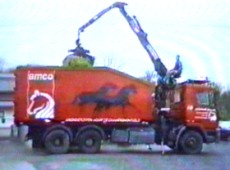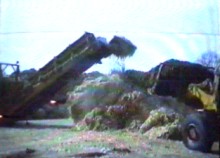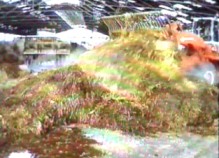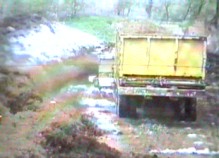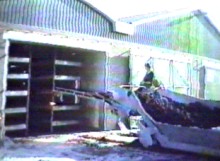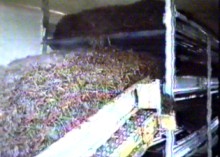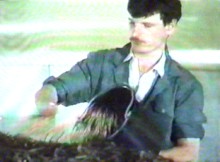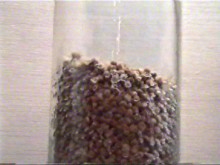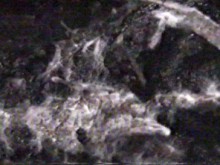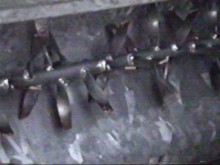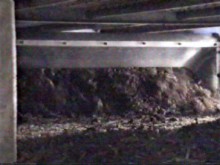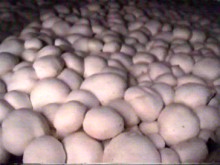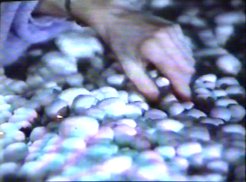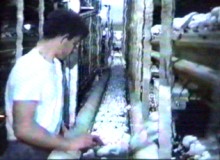Compost Production
This is an important part of mushroom cultivation, as spawns
require a rich substrate that is moist and full of nutrients. It
also has to be free of harmful microorganisms. Composting is a
multi-stage process, taking about 14 days, although before 1964,
this process would take many weeks of hard labour: |
|
|
|
The main ingredients of compost are straw and horse
manure, but the straw has to be pretreated before the two
are mixed. |
This involves mixing with
chicken manure and
sprinkling with liquid
manure, followed by heating. |
|
|
|
The horse manure and bedding
straw is then mixed in and fermented. |
More chicken manure may be added to provide extra
nitrogen and nutrients, and gypsum is included to obtain
the correct structure and acidity. |
|
|
|
The compost is then split
into long narrow piles and periodically turned. During
this period its internal temperature can reach 80ºC. At
the end of the process the compost is ready to be shipped
to a mushroom farm. |
| |
| The Cultivation
process |
|
|
|
Most farms now grow their
mushrooms on trays in stacks of two or three. The compost
shown here is being machine-loaded on sliding sheets. |
|
|
|
This is then inoculated
with the spawn (grain colonised by mycelium). |
Mycelium soon covers the
compost. |
|
|
|
After
two weeks the compost is covered with a
mixture of peat and chalk
called casing, this shows a
machine carrying
out this process. |
This picture
shows the control panel for the
climate control
system. This is
an important
part of the
process, as the environment has
to be changed to induce fruiting. |
The mycelium near the surface is then
broken up by a machine
called a ruffler. This
induces fruit body formation. This
picture show the
blades of a ruffler...
|
|
|
|
...and this is a ruffling machine in action. |
The fuiting bodies start
to appear. |
They grow tightly packed together ... |
|
|
|
and are soon
ready for harvesting... |
either by hand (for top quality) ... |
|
|
|
or by machine (for canning etc). |
The mushrooms are
then
graded by quality, size
and colour, and packaged for sale fresh ...
|
or sent for canning or bottling.. |
Photography by Prof.
S. W. Chiu, Department of Biological Sciences, The Chinese
University of Hong Kong, Shatin, Hong Kong. |

